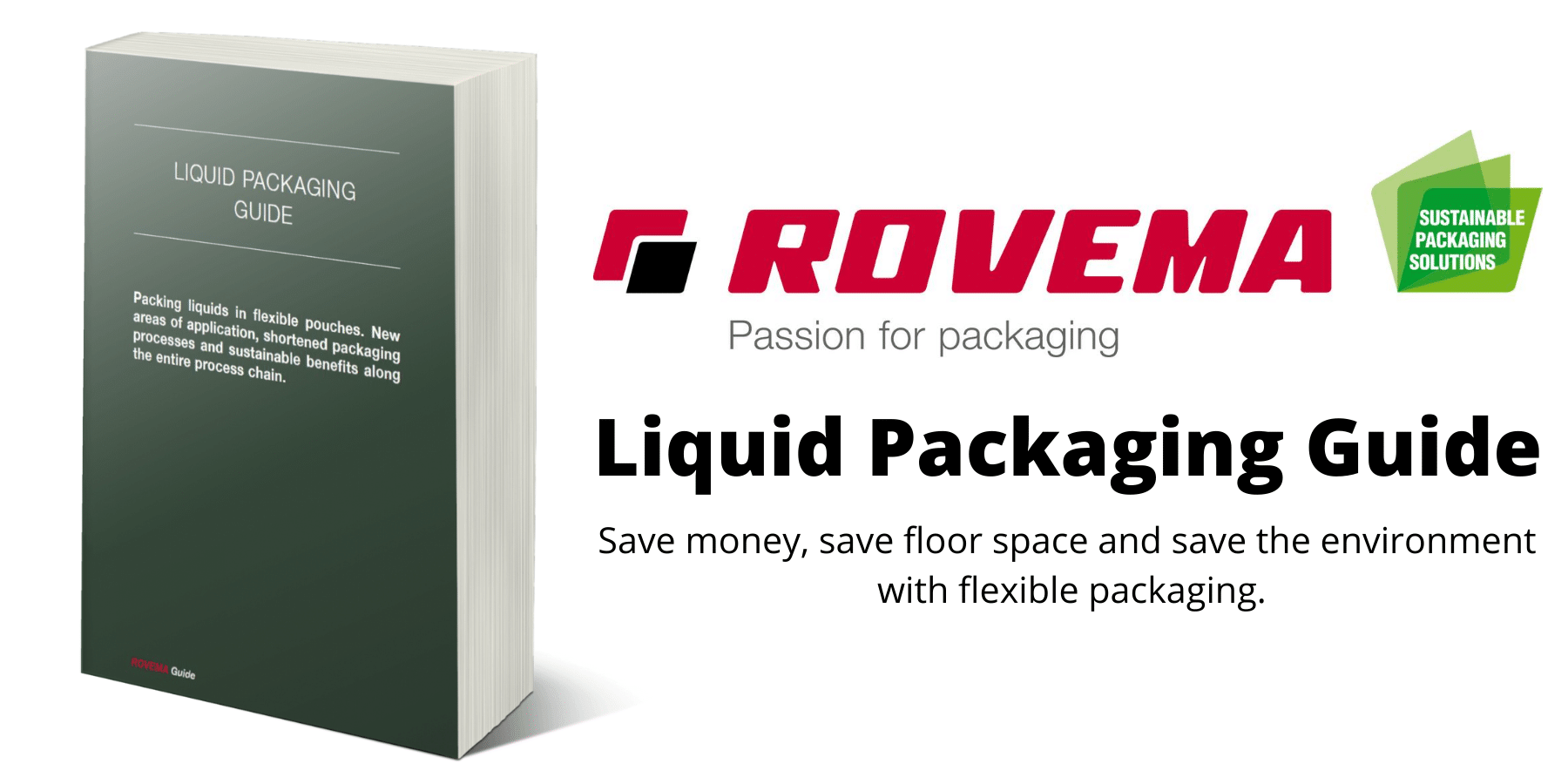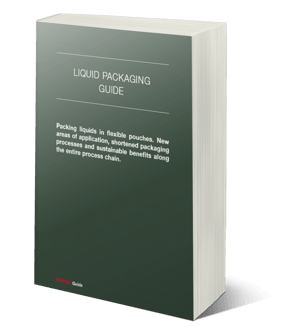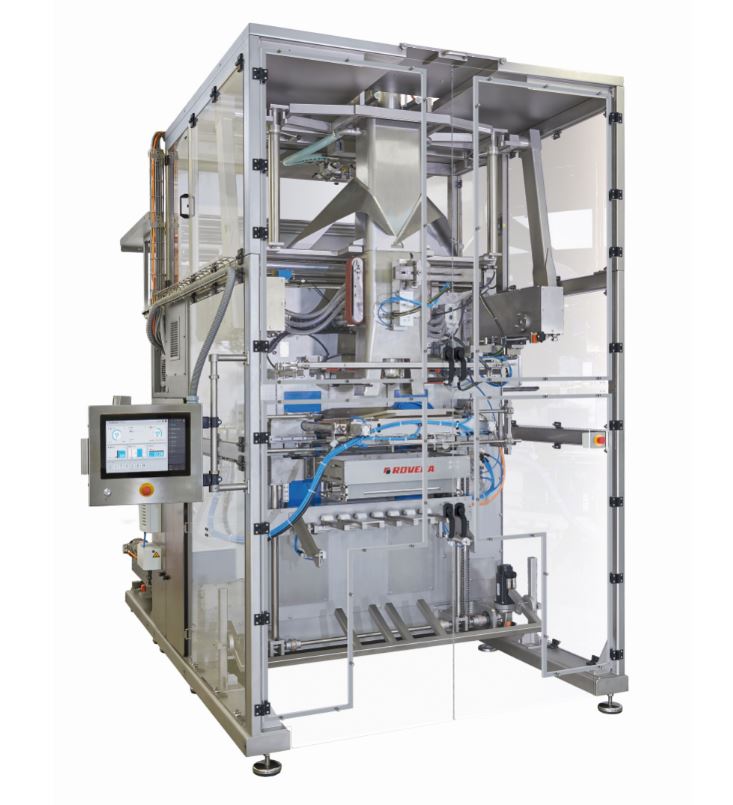3 min read
Replace Wasteful Metal Cans With Flexible Liquid Packaging: Free Guide
 Emily Brogan
:
Jul 27, 2020 11:33:11 AM
Emily Brogan
:
Jul 27, 2020 11:33:11 AM

Rovema North America announces a free liquid packaging guide for food service and institutional manufacturers detailing the considerations around improving efficiency and sustainability, all while reducing costs.
Retail Trend Spill-Over
The popularity of flexible packaging has been explosive in the last couple of decades, with producers and retailers alike reaping the benefits of market differentiation and merchandising with their customer facing products.
The packaging market as a whole is demanding improved sustainability along with ever-increasing price and efficiency pressure. Often for producers, sustainability considerations and margin pressures can seem incompatible due to potential higher costs of sustainable substrates and of course the cost of innovation.
FPA Case Study
For many segments though, the argument for a shift towards sustainability has been solid, and that has been for products in rigid packaging. According to a case study by the Flexible Packaging Association, by switching a retail product (ketchup) from the traditional PET bottle to a flexible pouch with a fitment, they were able to significantly reduce the product to package ratios, and utility/fossil fuel consumption. Just the reduction in unit weight alone, packaging costs and utility savings translated to significant freight and production cost savings for their retail products.
Now more than ever, VFFS machine manufacturer Rovema, is seeing the same transitions from rigid to flexible packaging in the food service and institutional spaces as well, for many of the same reasons.
For retail products, the main drivers of packaging trends come from the demand of customers and retailers. For food service packaging, the end users driving changes are busy restaurants, schools and other high volume users.
Flexible Liquid Packaging for Food Service
One interesting place to watch the trend is in liquid packaging, which includes soups, dips, relish, and even 2 component products like pickles and brine or canned produce and water.
Throughout the supply chain from processing, packaging, distribution and food service there is immense opportunity to improve sustainability, efficiency and substantially reduce a variety of costs.
The market shift from rigid packaging like number 10 cans over to flexible packaging for pumpable products is driven by the dramatic reduction in package weight and disposal space, resulting in an overall better experience for food service customers. So much so, that restaurants and larger institutions are demanding flexible packaging from their suppliers.
There is a long list of cascading benefits of switching from rigid to flexible packaging. Not only is the switch from rigid packaging like number 10 cans, over to flexible liquid packaging helping manufacturers to be competitive but the switch is helping food service customers improve their own operations and sustainability. This is an excellent example of how flexible packaging can speak to end user expectation while still fulfilling the need for efficiency and low input costs.
Switching from rigid to flexible packaging potentially generates up to 70 to 95% reduction in raw materials for retail and food service goods. It is a common myth that metal cans provide a longer shelf life for goods however, a can offers a 2- 5 year shelf life while a pouch can provide 8-10 years. It was Rovema’s goal to dispel myths such as this one in their new guide.
Free Guide on Flexible Liquid Packaging
Rovema’s new twenty three page guide to packaging liquids in flexible pouches takes a deep dive into each phase of the supply chain exploring the pros and cons between traditional methods including number 10 cans and buckets and the trend toward the more efficient flexible pouch packaging. It addresses historical market concerns and the remarkable advances in film engineering and manufacturing and also details their VFFS liquid packaging solution, the BVC 310 for liquids, which is servo driven with specialized stainless steel wash down that is quick and easy to clean.
The free guide to flexible liquid packaging for food service can be downloaded on Rovema’s website at the link below:
About Rovema North America, Inc.
Rovema NA is a wholly owned subsidiary of Rovema GmbH. Our operation in Atlanta is the North American sales, service and parts presence for all of Rovema’s engineered vertical form/fill/seal and end-of-line packaging solutions.
With over 1,000 machines installed in North America, we’re fully committed to the ongoing support of our machines. Although occasionally certain drive or control components are obsoleted by our suppliers, we provide all available parts and ongoing technical support for any operating Rovema machine.
Our team in Norcross is combining German quality & engineering with American market awareness and responsiveness. All our machines are built under a single roof (not a global master brand) and we’re aggressively building our staff to meet growing demand.
www.rovema-na.com.




